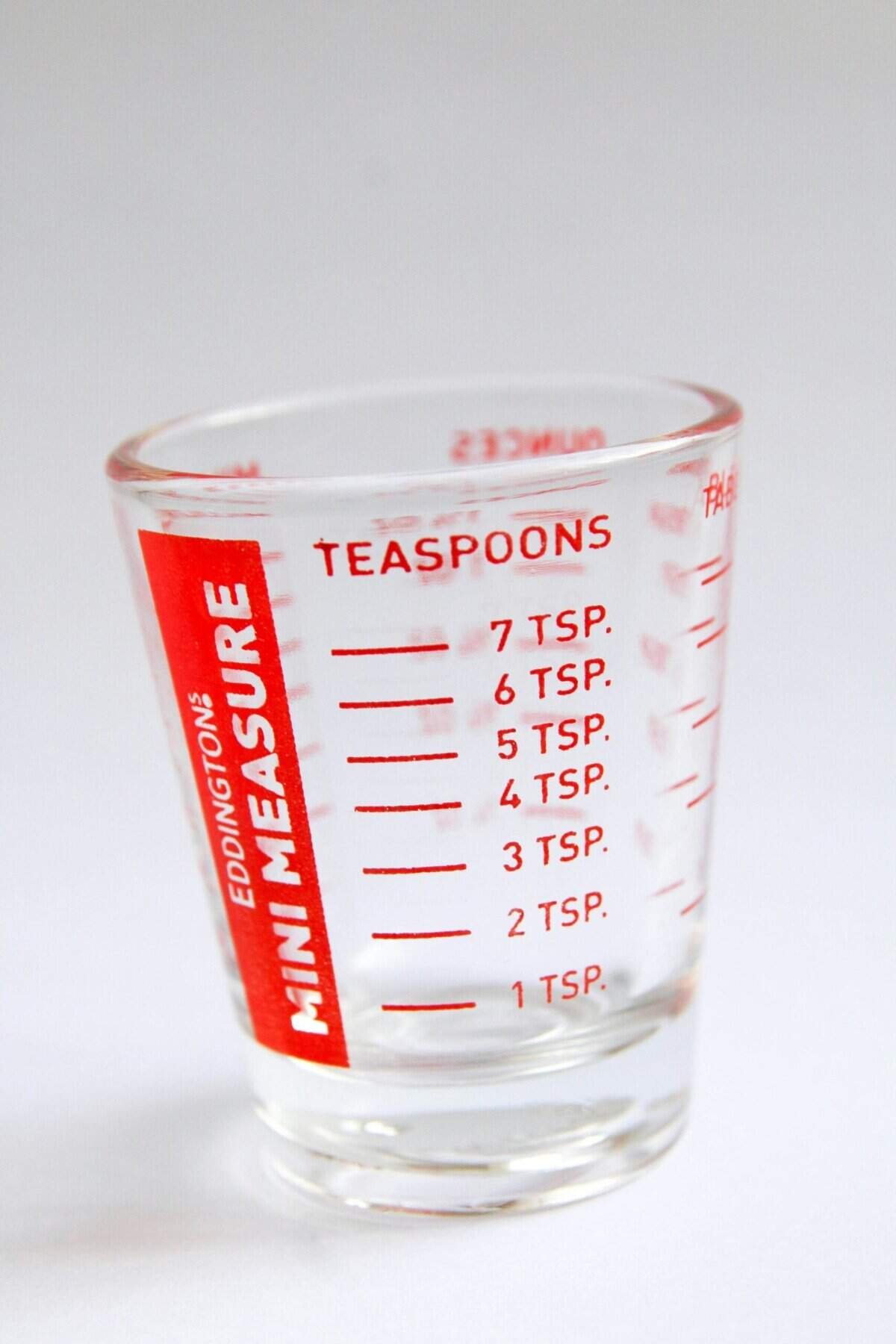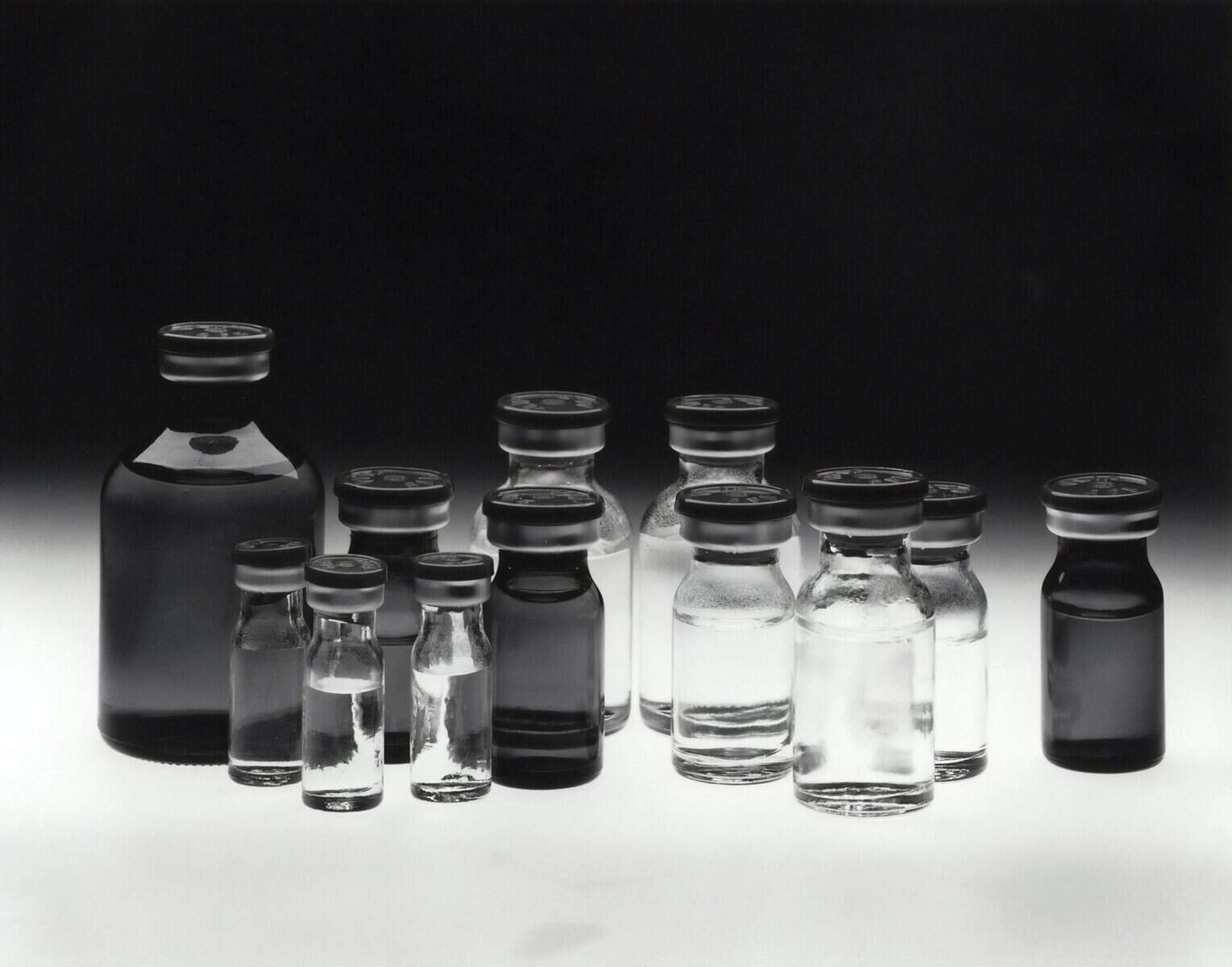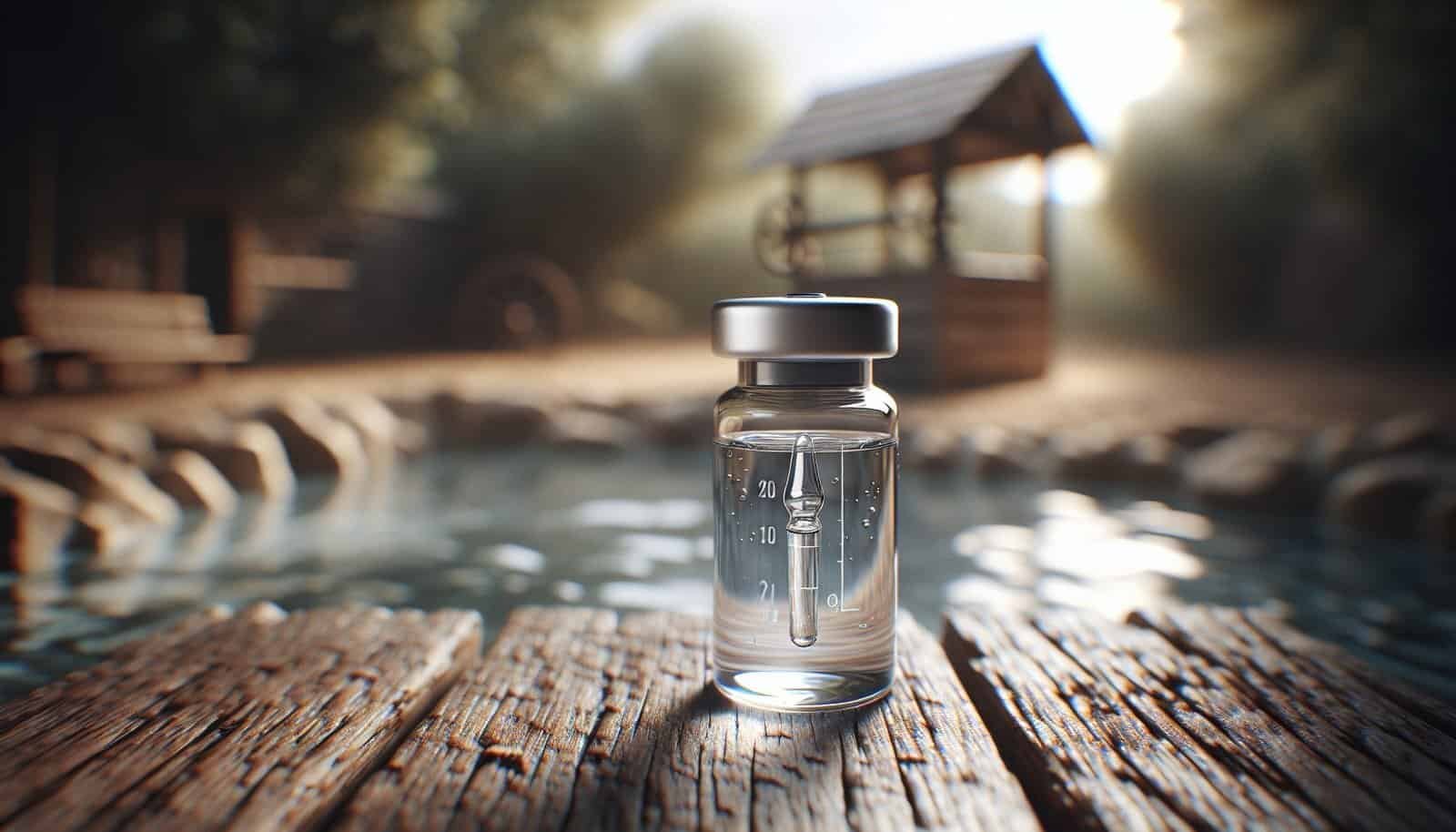Are you concerned that your well water might contain arsenic?

How Do I Test For Arsenic In My Well Water?
You depend on your well water for drinking, cooking, and caring for your family, so knowing whether it contains arsenic is important. This guide walks you through why testing matters, how to test correctly, what results mean, how to treat contaminated water, and how much testing and sealing an abandoned well may cost.
Why You Should Test for Arsenic
You may not be able to see, taste, or smell arsenic in water, but it can still be present at harmful levels. Testing is the only reliable way to know whether your well water is safe and whether you need treatment. If your well is in an area known for naturally occurring arsenic in bedrock or groundwater, or if you notice changes in well performance after drilling or construction nearby, testing is especially important.
How Arsenic Gets into Well Water
Arsenic commonly enters groundwater through natural processes. It is a component of many rocks and soils and can dissolve into groundwater over time. Human activities such as mining, industrial processes, and improper disposal of wastes can also introduce arsenic into aquifers. The amount in your well depends on local geology, well depth, and groundwater chemistry.
Health Risks of Arsenic Exposure
Arsenic is toxic and can cause both short-term and long-term health problems. Short-term exposure at very high levels is rare from private wells, but long-term exposure to even low levels increases the risk of skin lesions, cardiovascular disease, diabetes, and several cancers (skin, bladder, lung). Because effects often develop slowly, testing and taking action early are key to protecting your health and your family’s.

When to Test Your Well
You should test your well:
- When you first get a well or move into a home with a private well.
- If you notice changes in taste, odor, color, or well performance.
- After repairs or work on your well system or nearby drilling.
- If your neighbor tests positive for arsenic and you share the same groundwater source.
- Periodically as part of regular well monitoring — many experts recommend testing every 1–3 years for arsenic, depending on local risk.
Types of Arsenic Tests
You have several testing options. Each has pros and cons for cost, accuracy, and speed.
At-Home Test Kits
At-home kits typically use a color-change strip or reaction vial to indicate the presence of arsenic. They are inexpensive and quick, but they vary in sensitivity and accuracy. These kits can be useful for screening, but they are not as reliable as certified laboratory tests for confirming results or measuring precise concentrations.
Laboratory Testing (EPA-Certified Labs)
Testing at a certified laboratory is the most reliable option. Labs use methods such as Inductively Coupled Plasma Mass Spectrometry (ICP-MS) or Atomic Absorption Spectrometry (AAS) to detect arsenic at very low concentrations. Certified labs provide a quantifiable result in micrograms per liter (µg/L) or parts per billion (ppb). This is the recommended approach when you need accurate results to decide on treatment.
Field Instruments and Professional Sampling
Some contractors and environmental consultants use field instruments or provide professional sampling and rapid analyses. Field methods may provide quicker results than lab submission, but you’ll want to ensure the method and operator are qualified and that a lab-confirmed test backs any major decisions.

Comparison of Common Test Options
| Test Type | Approximate Cost | Detection Limit | Accuracy | When to Use |
|---|---|---|---|---|
| At-home colorimetric kit | $10–$50 | ~10–50 ppb (varies) | Low-moderate | Quick screening, not for decision-making |
| Certified lab (single parameter) | $40–$150 | <1 ppb to few ppb< />d> | High | Definitive testing, treatment decisions |
| Lab panel (metals + contaminants) | $100–$300+ | <1 ppb< />d> | High | Comprehensive water quality assessment |
| Professional sampling + lab | $150–$400+ | Lab-dependent | High | When you need chain-of-custody or expert sampling |
How to Collect a Proper Water Sample for Arsenic Testing
A correct sample is essential for reliable results. Follow these steps to collect a good sample whether you’re using a lab test or a professional sampler:
- Contact the lab first to get specific instructions and a clean sample bottle. Many labs provide pre-cleaned bottles and labels.
- Use a fresh, clean bottle provided or approved by the lab. Do not use random household containers.
- Run the water until it is cold and steady for at least a couple of minutes to clear stagnant water from the plumbing. If the lab asks for “first-draw” sample, follow their instructions exactly.
- Disinfect the faucet with alcohol or flame if instructed by the lab, then avoid touching the inside of the bottle or cap.
- Fill to the line if a preservative is present or as instructed; sometimes acid is added for certain metals testing, so follow lab directions.
- Cap tightly, label the sample correctly, and keep it refrigerated or on ice if the lab requests immediate shipment.
- Deliver or ship the sample to the lab within the timeframe specified — usually within 24–48 hours for best accuracy.
If you hire a professional sampler, they will take care of these steps and usually provide chain-of-custody documentation if needed.
Supplies Checklist
| Item | Purpose |
|---|---|
| Lab-supplied sample bottle | Ensures no contamination and correct preservatives |
| Permanent marker or lab label | Proper identification |
| Cooler and ice packs | Keep sample cool for transport if required |
| Gloves | Prevent contamination from hands |
| Clean cloth | Clean faucet area before sampling |

Interpreting Test Results
Laboratories report arsenic concentrations in micrograms per liter (µg/L) or parts per billion (ppb); the values are numerically the same. The U.S. Environmental Protection Agency (EPA) maximum contaminant level (MCL) for arsenic in public water systems is 10 ppb (10 µg/L). The World Health Organization (WHO) guideline is also 10 µg/L. Many public health agencies recommend treating private wells if arsenic exceeds 10 ppb, though some states have lower recommended limits.
If your result is below 10 ppb, your water is usually considered acceptable by these agencies, but you may choose to retest periodically. If your result is at or above 10 ppb, you should take action to reduce exposure.
What to Do If Your Well Tests Positive
If your arsenic result is above the recommended limit:
- Stop using the water for drinking and cooking if possible, and use bottled water or an alternate safe source until you install a treatment system or find another solution.
- Re-test to confirm the result. Consider using a certified lab if you initially used an at-home kit.
- Determine the arsenic species (As(III) vs. As(V)) if you plan treatment. Some methods remove As(V) more effectively than As(III), so oxidation may be needed before treatment.
- Evaluate treatment options based on arsenic concentration, speciation, water chemistry, and household needs.
- Contact local health or environmental authorities for guidance and to learn about any state programs or funding assistance.

Treatment Options for Removing Arsenic
There are several effective treatment technologies. Your choice depends on arsenic levels, whether arsenic is present as As(III) or As(V), the size of your household system, and budget.
Point-of-Use (POU) Systems
These systems treat water at a single tap (often the kitchen sink) and are suitable if drinking water is the primary concern.
- Reverse Osmosis (RO): Highly effective for arsenic, especially when equipped with pre-oxidation for As(III). Produces relatively pure water but wastes some water during operation and requires periodic membrane and filter replacement.
- Distillation: Removes arsenic by boiling and condensing steam. Effective but energy-intensive and slower; requires maintenance and regular cleaning.
- Adsorptive Media (e.g., activated alumina, iron-based media): Can be effective, especially for As(V). Media must be replaced or regenerated based on capacity.
Point-of-Entry (Whole-House) Systems
These systems treat all water entering the home and are used if arsenic poses a risk for cooking, bathing, or livestock.
- Coagulation/Filtration or Adsorptive Media Pressure Filters: These can be sized for whole-house flow; maintenance is required, and media replacement costs apply.
- Ion Exchange: Some ion-exchange systems remove arsenic, though they can also remove beneficial minerals and may require regeneration.
Pre-Oxidation
If arsenic is primarily in the reduced form As(III), oxidation is often required before many treatment methods. Common oxidants include chlorine, permanganate, ozone, or aeration. A professional can test speciation and recommend an appropriate system.
Blending or Alternative Water Sources
If you have multiple wells or can access a different water source with lower arsenic, blending can reduce concentrations. This is site-specific and requires careful monitoring.
Treatment Selection Considerations
- Arsenic species (As(III) vs. As(V)).
- Initial arsenic concentration.
- Flow rates and household water demand.
- Other water chemistry (iron, manganese, pH, hardness) which can affect treatment performance.
- Maintenance requirements and operating costs.
- Certification: Look for systems certified for arsenic reduction (by NSF/ANSI or other recognized organizations).
Treatment Options at a Glance
| Treatment Type | Typical Cost Range | Effectiveness (As(V) / As(III)) | Maintenance | Notes |
|---|---|---|---|---|
| Point-of-use Reverse Osmosis | $300–$2,000 installed | High / Moderate-High (with pre-oxidation) | Replace membranes and filters periodically | Good for drinking water only |
| Distillation | $400–$2,000 | High / High | Regular cleaning, energy costs | Slow, energy-intensive |
| Activated Alumina or Iron-based Adsorptive Media (POU/POE) | $500–$3,000+ | High for As(V), lower for As(III) unless oxidized | Media replacement or regeneration | Effective if managed properly |
| Ion Exchange | $1,000–$4,000+ | Moderate-High / Depends on system | Regeneration, resin replacement | May change water chemistry |
| Coagulation/Filtration (POE) | $2,000–$8,000+ | High | Backwashing, chemical handling | Used for whole-house treatment |
Costs vary widely by region, installation complexity, and system size. Always get multiple quotes and check warranties and certifications.
Ongoing Maintenance and Retesting
After installing a treatment system, you’ll need to maintain it and retest:
- Follow manufacturer recommendations for filter and membrane replacement.
- Periodically test treated water and raw well water to ensure the system continues to remove arsenic effectively.
- Retest the untreated well water at least every 1–3 years, or more often if system performance changes or you notice changes in water quality.
How Much Does Arsenic Testing Cost?
Testing costs depend on the method and whether you hire someone to sample.
- At-home kits: $10–$50. Good for preliminary screening but less accurate.
- Certified lab single-parameter arsenic test: $40–$150.
- Comprehensive water quality panel (metals, nitrates, bacteria): $100–$300+.
- Professional sampling: $100–$300+ (in addition to lab fees) if you want a sampler to collect and deliver the sample.
- Expedited lab processing or chain-of-custody services may add extra fees.
Budget for confirmatory lab testing if a rapid test returns a positive result.
Finding a Certified Lab and Professional Help
To find certified labs and contractors:
- Check your state or provincial public health department or environmental agency for a list of certified labs for drinking water testing.
- Look for contractors licensed for well drilling, pump service, and water treatment. State licensing boards or departments of natural resources often maintain lists.
- Ask for references, get multiple quotes, and verify certifications (e.g., NSF/ANSI certifications for treatment equipment).
- Your local health department can often provide guidance, referrals, and information about financial assistance programs.
What to Do About an Abandoned Well
Abandoned wells can be hazards for contamination and safety. They can provide a direct pathway for surface contaminants to reach groundwater and can pose physical danger.
Risks of Abandoned Wells
- They can allow runoff, fertilizers, pesticides, or bacteria to enter the aquifer.
- They can be a physical hazard for people and animals.
- They can affect groundwater flow and the performance of nearby wells.
Sealing (Plugging) an Abandoned Well
Sealing is the process of permanently closing the well to protect groundwater and remove safety hazards. This usually requires filling the well with grout or bentonite from the bottom up so there is no conduit for contamination.
What’s the Cost of Sealing an Abandoned Well?
Costs for sealing vary by depth, diameter, accessibility, local regulations, and whether the work is straightforward or requires special equipment. Typical cost ranges are:
- Shallow, small-diameter, easy-access wells: $300–$1,000.
- Typical residential wells (moderate depth, standard access): $1,000–$3,000.
- Deep wells, large diameter, difficult access, or special conditions: $3,000–$10,000+.
These ranges include labor, materials (bentonite or cement grout), and disposal of removed equipment as needed. Permit fees, if required, may add $50–$500 or more.
Cost Factors
| Cost Factor | How It Affects Price |
|---|---|
| Well depth and diameter | Deeper and wider wells require more grout and more time to seal |
| Accessibility | Remote or hard-to-reach sites add mobilization and labor costs |
| Condition of well | Corroded casing or stuck debris can complicate sealing |
| Local regulations and permits | Permitting and inspection requirements may add costs |
| Materials used | Bentonite vs. cement grouts and other specialty materials vary in cost |
| Disposal needs | Removing old pumps, pipes, and debris may add disposal fees |
Who Should Seal a Well?
Most states require a licensed well driller or pump installer to plug a well. DIY plugging is not recommended because improper sealing can worsen contamination or leave hazards. Contact your local health department for rules and to find licensed professionals. Some agencies may offer cost-share or grants for sealing abandoned wells, especially if the well poses an environmental risk.
Example Action Plans Based on Arsenic Levels
- Below 10 ppb: Retest every 1–3 years and maintain routine monitoring. Consider treatment if you want an added safety margin.
- 10–50 ppb: Confirm with a certified lab, stop using the water for drinking until treated or alternative supply arranged, and consult with a water treatment professional about appropriate systems.
- Above 50 ppb: Take immediate steps to avoid ingestion (use bottled or alternative water), confirm results with a lab, and install an effective treatment system or find an alternative water source. Notify local health authorities as recommended.
Frequently Asked Questions
Q: Does boiling water remove arsenic? A: No. Boiling water does not remove arsenic and can concentrate it as water evaporates. Use treatment methods designed to remove arsenic instead.
Q: Will a standard home water softener remove arsenic? A: Most standard sodium-exchange water softeners do not effectively remove arsenic and may even increase solubility. Specialized systems or adsorptive media are typically used for arsenic removal.
Q: Can I use bottled water indefinitely if my well has arsenic? A: Bottled water is a safe short-term option but may be expensive long-term. Treating your well or finding a safe, permanent source is more sustainable.
Q: How often should I test my treated water? A: Test the treated water initially after installation and then at least annually, or as recommended by the treatment manufacturer or local health authority.
Q: Are there grants or assistance programs for testing and sealing wells? A: Some state and federal programs provide cost-share, grants, or low-interest loans for testing, treatment, or sealing abandoned wells—check with your local health department or state environmental agency.
Steps to Take Right Now
- Decide whether you need a quick screening (at-home kit) or a definitive lab test. For safety, a certified lab test is best.
- Contact a certified lab and request instructions and bottles for arsenic testing.
- Collect the sample as instructed, or hire a professional sampler if you want chain-of-custody documentation.
- If arsenic is detected above recommended levels, stop using the water for drinking and cooking, confirm results, and begin researching treatment options or alternate water sources.
- If you have an abandoned well, contact local authorities about proper sealing and obtain quotes from licensed well contractors.
Final Thoughts
Testing your well for arsenic is a practical and necessary step to protect your health and property. With accurate testing, correct sampling, and the right treatment or remediation steps, you can ensure your water is safe. If you discover elevated arsenic levels, act promptly to confirm results, prevent exposure, and choose an appropriate and sustainable solution. If you need help identifying certified labs, treatment contractors, or local programs that could offset costs, contact your local public health or environmental agency — they’re a good resource for local rules and referrals.
